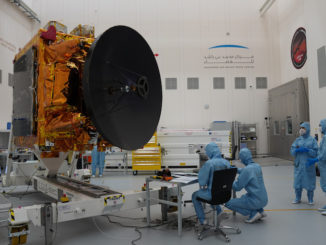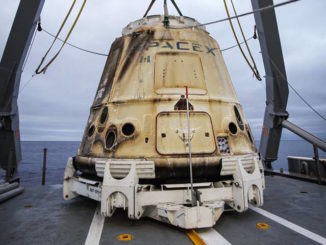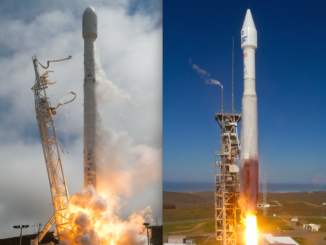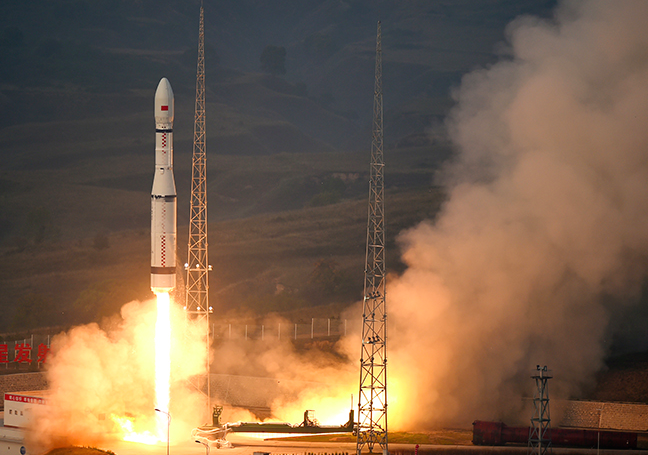
Satellogic’s recent agreement with a Chinese company to launch 90 commercial Earth observation satellites on five or six dedicated Long March rocket flights marks one of China’s biggest wins in the global launch market.
Satellogic has launched eight satellites to date, and the company announced a new contract Jan. 15 with China Great Wall Industry Corp. to launch 90 more microsatellites aboard Chinese Long March rockets, the largest single deal for Chinese launch industry on the international commercial market in more than 20 years.
“We’re putting our next 90 satellites into orbit with them over the next 24 months,” said Emiliano Kargieman, founder and CEO of Satellogic. “This is really a milestone for us, for Satellogic.”
Satellogic and China Great Wall — the state-owned company charged with marketing Long March launch services internationally — declined to release the monetary value of the launch contract.
Based in Argentina and backed by Chinese financing, Satellogic is building a fleet of satellites to cover the globe with visible, hyperspectral and infrared imagery. The company is one of several startups active in the commercial Earth-imaging market, along with Planet, BlackSky, ICEYE, and others.
Each company offers a different service, but all use — or plan to use — nanosatellites and microsatellites to image the Earth, cutting costs compared to traditional satellite operators and providing the capability to scan the entire planet more rapidly.
The 90-satellite fleet in developed at Satellogic “allows us to build out the constellation that we need to map the planet at 1-meter (3.3-foot) resolution every week, and we think this combination of high-resolution data will really put us in a position to start paying off on the promise of Earth observation to improve decision-making for a wide range of industries, and democratizing access to this kind of information, which we believe is very valuable,” Kargieman said in an interview with Spaceflight Now.
Spaceflight Now members can read a transcript of our full interview with Emiliano Kargieman. Become a member today and support our coverage.
Five or six launches using a combination of Long March 6 and Long March 2D rockets will deliver the 90 satellites to orbit by the end of 2020, according to Satellogic, which is headquartered in Buenos Aires and has its satellite manufacturing facility in nearby Montevideo, Uruguay.
The 90-satellite constellation planned by Satellogic follows the launch of five ÑuSat Earth-observing smallsats on Long March 4B and Long March 2D rockets since 2016. Three more ÑuSat-type satellites are slated to fly as secondary payloads on a Chinese launch later this year, before Satellogic begins flying spacecraft on dedicated Long March missions, Kargieman said.
“The next three satellites that we will launch will actually be on a rideshare that we’ve had on contract for a while, and it’s been delayed a few times, as is usually the case with rideshares,” Kargieman said. “But this announcement that we’re making is for a series of dedicated launches, and part of the reason we believe this is a big milestone for us, is it allows us to get control of our own schedule, for the rollout of the satellites, and not having to depend on the primaries, due to the complications of piggybacks.”

The Long March 6 rocket can launch 13 of Satellogic’s satellites at a time, and the bigger Long March 2D can carry up to 36 spacecraft per mission, according to Kargieman. The first dedicated launch using the Long March 6 rocket is planned later this year.
The Long March 6 is one of China’s newest rockets. Fueled by kerosene and liquid oxygen, the Long March 6 stands around 95 feet (29 meters) tall and is capable of placing payloads of up to 1,100 pounds (500 kilograms) into a sun-synchronous orbit several hundred miles above Earth.
China has launched two Long March 6 missions to date — both successfully — from a launch pad at the Taiyuan space base in northeastern China’s Shanxi province. The larger Long March 2D rocket is a workhorse for China, launching more than 40 times since the 1990s from Taiyuan and from the Jiuquan base in northwestern China’s Inner Mongolia region.
“We’re proud to extend our highly successfully working relationship with Satellogic,” said Gao Ruofei, executive vice president of China Great Wall. “Satellogic’s constellation will introduce a new era of affordable Earth observation just as the Long March 6 will open new opportunities for the global space industry.”
Satellogic builds and operates its own satellites, using no components that are sensitive to U.S. export restrictions under International Traffic in Arms Regulations, laws which prevent the use of some U.S.-made spacecraft components on satellites launching aboard Chinese rockets. Many satellites not manufactured in the United States often rely on subsystem components made by U.S. companies.
“We designed the satellites outside of the U.S., we’re not using any of those components,” Kargieman said. “We have full control over the compliance. One of the design goals was to make it resilient to all of the different regulations, and part of that is avoiding the overhead and the complications of ITAR and other export restrictions.”
Kargieman said producing satellites without U.S. parts was “complicated at times.”
“When you know there is an off-the-shelf solution to a problem a you have, and you could go on the Internet and buy it, and yet you are developing a supply chain around the work to try and build that from scratch, you have to make a lot of decisions to go and do that,” he said. “But we believed from the beginning that this was a strategic advantage for us, and so we pressed on. I don’t know if I’d recommend it to anyone else, but it definitely works for us.”
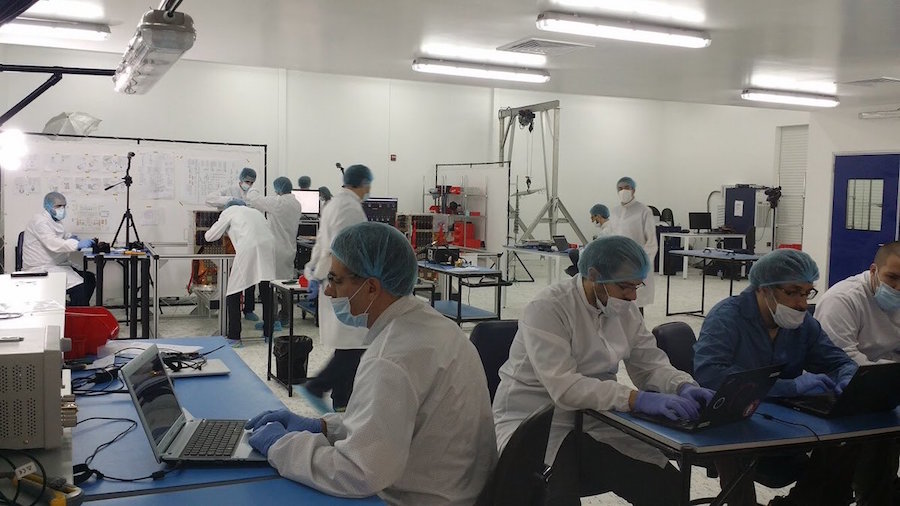
Satellogic eventually plans to deploy a constellation of 300 satellites to expand coverage, and Kargieman said the company will consider other launch options in the future.
“We’ve talked to all of the launch providers,” he said. “These 90 satellites are not the last 90 satellites that we will ever launch, and we expect to launch from a variety of different launchers in the future. The truth is it was a very natural decision for us because of the eight satellites that we’ve launched so far, seven were launched with Chinese rockets, and we’ve established a really good partnership with China over the years. We know the team well. Their team knows our team very well, so communication is very fluid.”
In the end, China Great Wall’s launch offering was the “right agreement” for Satellogic, Kargieman said.
“The combination of the availability these new launchers, the combination of capacity and cost, plus the existing relationship, really made this a very simple decision at this stage,” he said. “If I look at launch availability in the next 24 months, there’s nothing like what we just closed with China, nothing even remotely close. Of course, we’re following very closely the developments in the small launcher market, and what everyone’s doing. We expect that as more of these small launch vehicles start hitting the market, that it’s going to become more competitive, and we’re going to have more options. We’re going to have to maintain this constellation in orbit, and grow it to 300 satellites, so we have plenty of opportunities to work with other people.”
The Satellogic satellites are fitted with black-and-white, hyperspectral and infrared cameras designed to collect light at numerous wavelengths, revealing information about vegetation, land use, and pollution not easily discernible with a conventional visible camera.
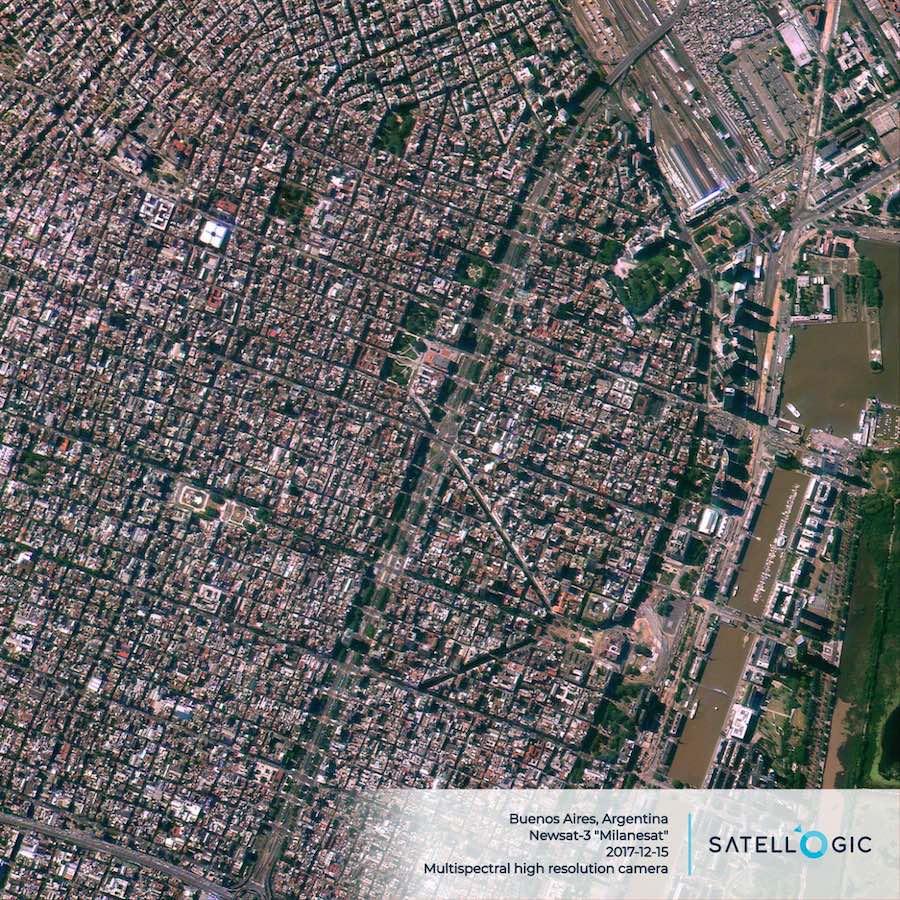
Kargieman said the next 90 satellites being built by Satellogic will “incremental evolutions” of the ÑuSat design, also known as the Aleph 1 series. The spacecraft will launch into polar, sun-synchronous orbits around 310 miles (500 kilometers) in altitude.
“They’re around 45 kilograms (99 pounds) at launch, including propellant,” Kargieman said. “They’re sort of the size of a small fridge, and 1 meter by 50 centimeters by 50 centimeters (3.3 feet by 1.6 feet by 1.6 feet). They’re pretty small and lightweight.”
Satellogic currently has around 15 satellites in various stages of production at the company’s factory in Uruguay, according to Kargieman.
:”In oil and gas, we have been (supporting) pipeline monitoring, oilfield monitoring for environmental and security reasons,” he said. “In forestry, we’re particularly focusing on operations management for forestry companies and for pulp and paper companies. In agriculture, we have been working on some applications that require higher-resolution. For governments, we’ve been working a lot on rural cartography, one of the areas where we expect a lot of value to come from 1-meter resolution data.
“Irrigation management is another area where we have deployed applications and solutions. Supply chain management for companies with large agricultural footprints in their supply chain. These are some of the applications we have currently in the works,” he said.
Email the author.
Follow Stephen Clark on Twitter: @StephenClark1.

